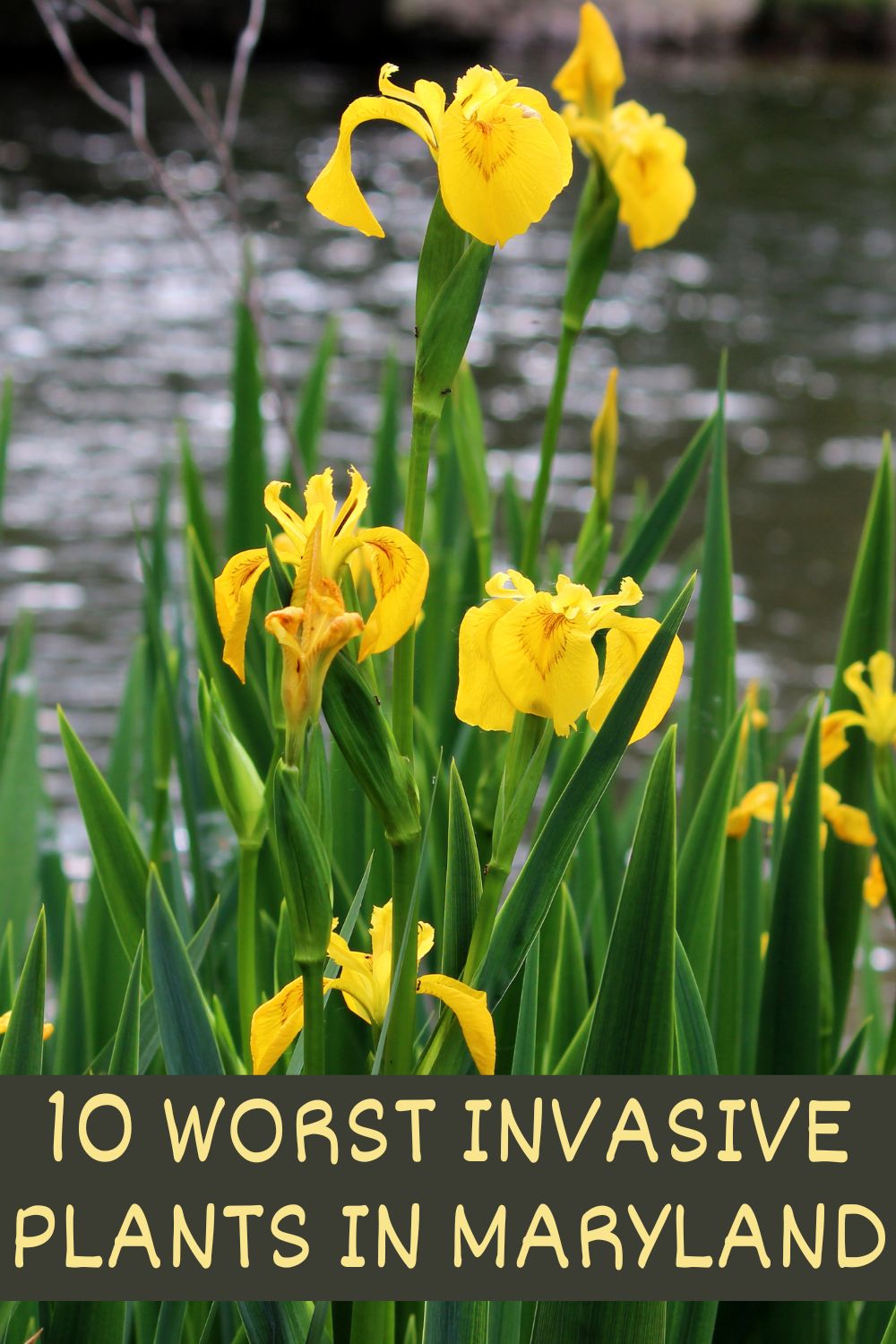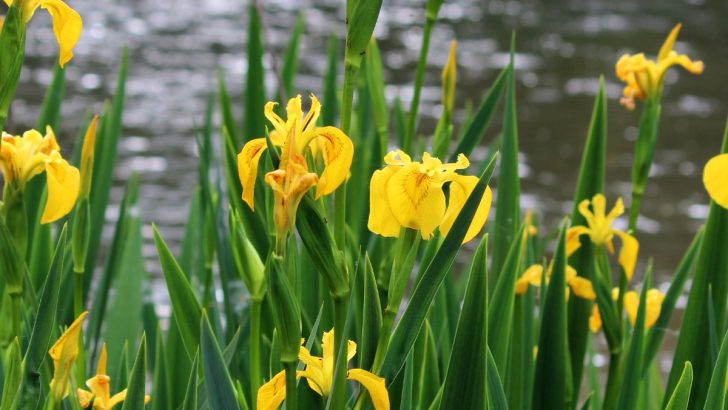When selecting plants to grow in our home gardens, we often focus on appearance, size, and growing requirements. But there is another factor we should consider as well: invasiveness. Native vegetation attracts birds, butterflies, and other beautiful and beneficial wildlife. Invasive plants, on the other hand, choke out native species and alter ecosystems. They can even negatively impact agriculture and the economy. Some of the most common invasive plants in Maryland gardens are described below, so you can adequately identify any on your own property. Each description also includes some similar native plants you can replace the invasive species with for a beautiful, wildlife-friendly garden.
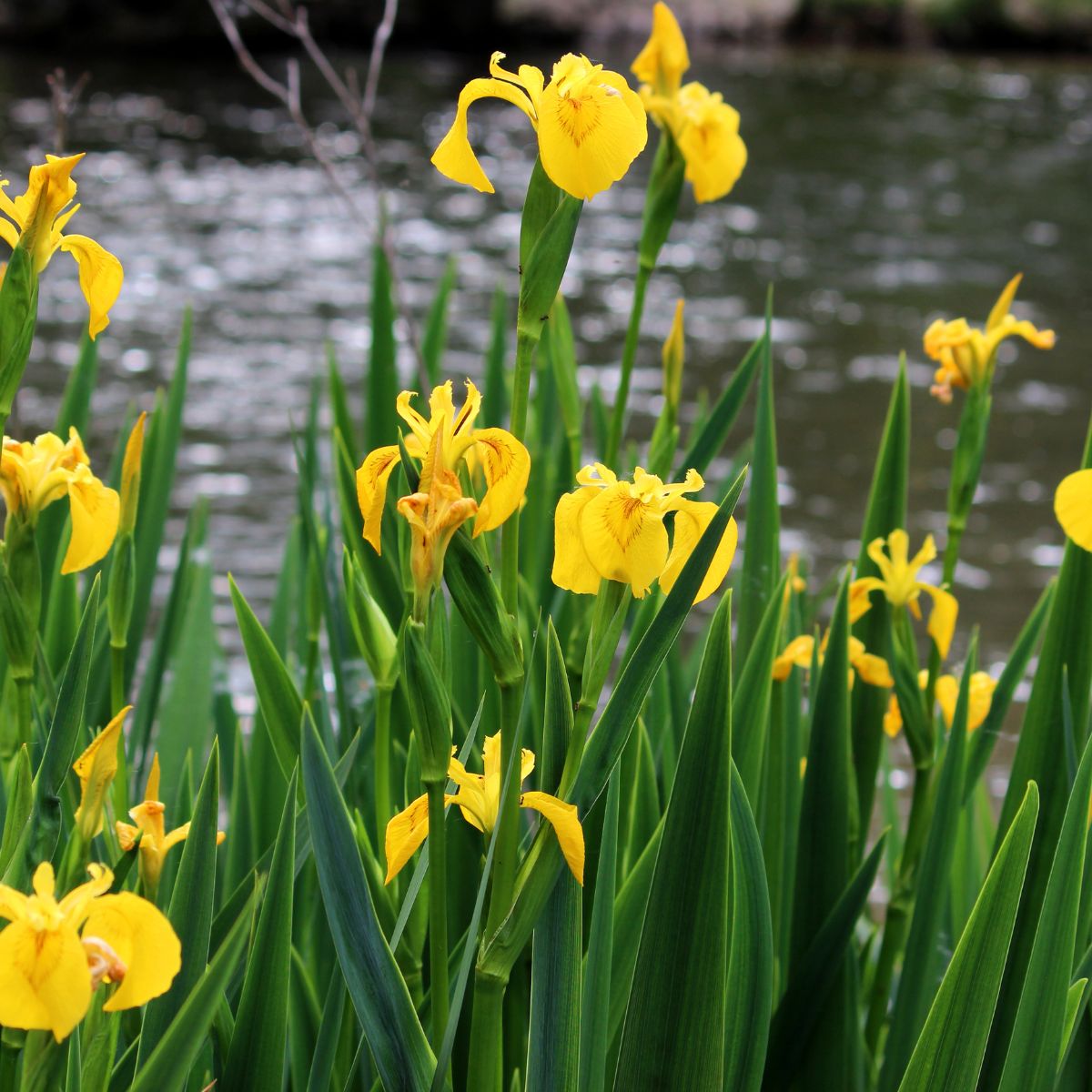
Invasive Plants in Maryland Gardens
If you discover any invasive plants in your garden, make sure to remove them properly. Otherwise, they may re-sprout and continue their aggressive spread. Check out the resources provided by the University of Maryland Extension for controlling the spread of invasive species, or contact your local government office for assistance.
1. Amur honeysuckle (Lonicera maackii)

One of the most common bush honeysuckles in the mid-Atlantic region, Amur honeysuckle thrives in a wide range of conditions. This deciduous shrub reaches up to 20 feet in height and has small, opposite, ovate leaves with tapered tips. The classic tubular flowers grow in pairs and bloom white to pale pink, fading to yellow. Red berries appear in late summer and may remain through winter. If you’re unsure, snip off a mature stem; the pith of invasive bush honeysuckles is hollow.
Another invasive honeysuckle, Japanese honeysuckle (L. japonica), has a similar appearance but with fuzzy stems and leaves and black berries.
Native bush honeysuckles include the American fly-honeysuckle (L. canadensis) and northern bush-honeysuckle (Diervilla lonicera).
2. Bamboo (Bambusa vulgaris, Phyllostachys aurea)
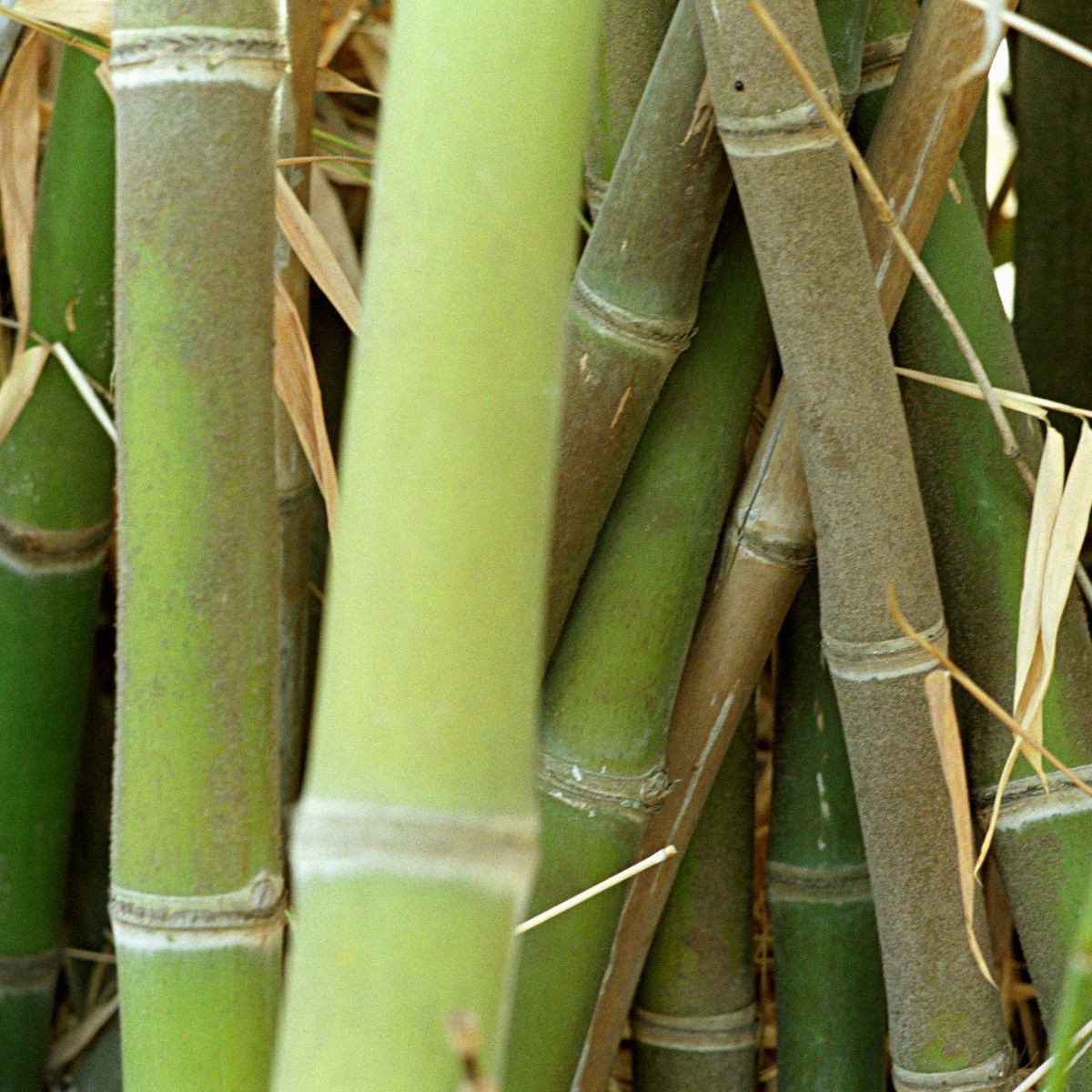
Several invasive species of bamboo can be found in Maryland, including common bamboo (Bambusa vulgaris) and golden bamboo (Phyllostachys aurea). These woody grasses form dense thickets that crowd out native plants and can be nearly impossible to eradicate. Bamboo has hollow, woody stems with solid joints and long, narrow leaves with tapered tips and a tough, leathery texture.
Giant cane (Arundinaria gigantea) and switch cane (A. tecta) have a very similar appearance to the invasive bamboos but provide important benefits to wildlife.
3. Burning bush (Euonymus alatus)

A popular ornamental shrub, burning bush can be easily identified by its winged stems and stunning red fall foliage. Look also for inconspicuous green flowers in spring and bright red fruits in summer. The shrubs average five to 10 feet high but have been known to reach 20 feet.
Native strawberry bush (E. americana) has a similar appearance but without winged stems, and eastern wahoo (E. atropurpureus) would make an equally nice alternative.
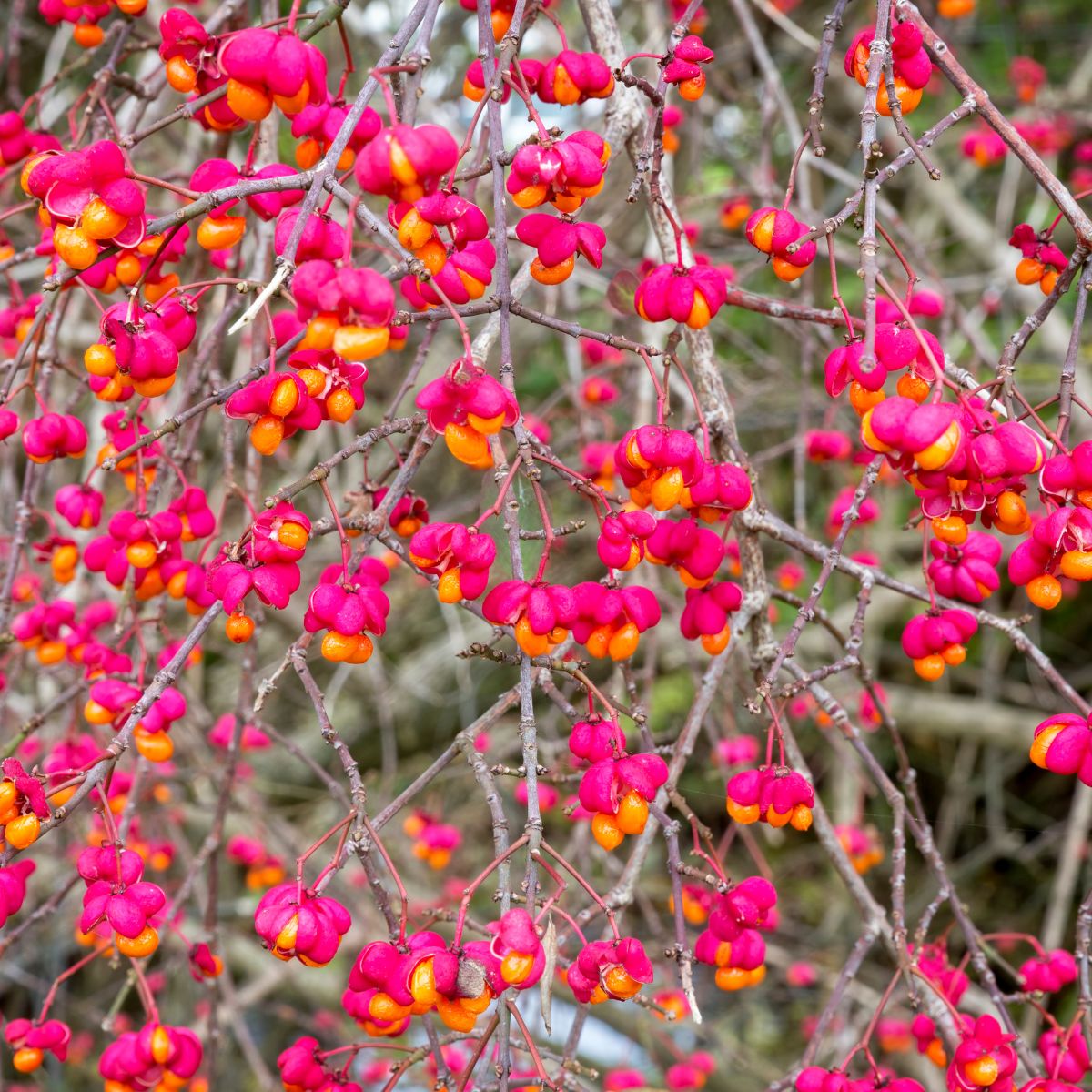
4. Callery pear (Pyrus calleryana)
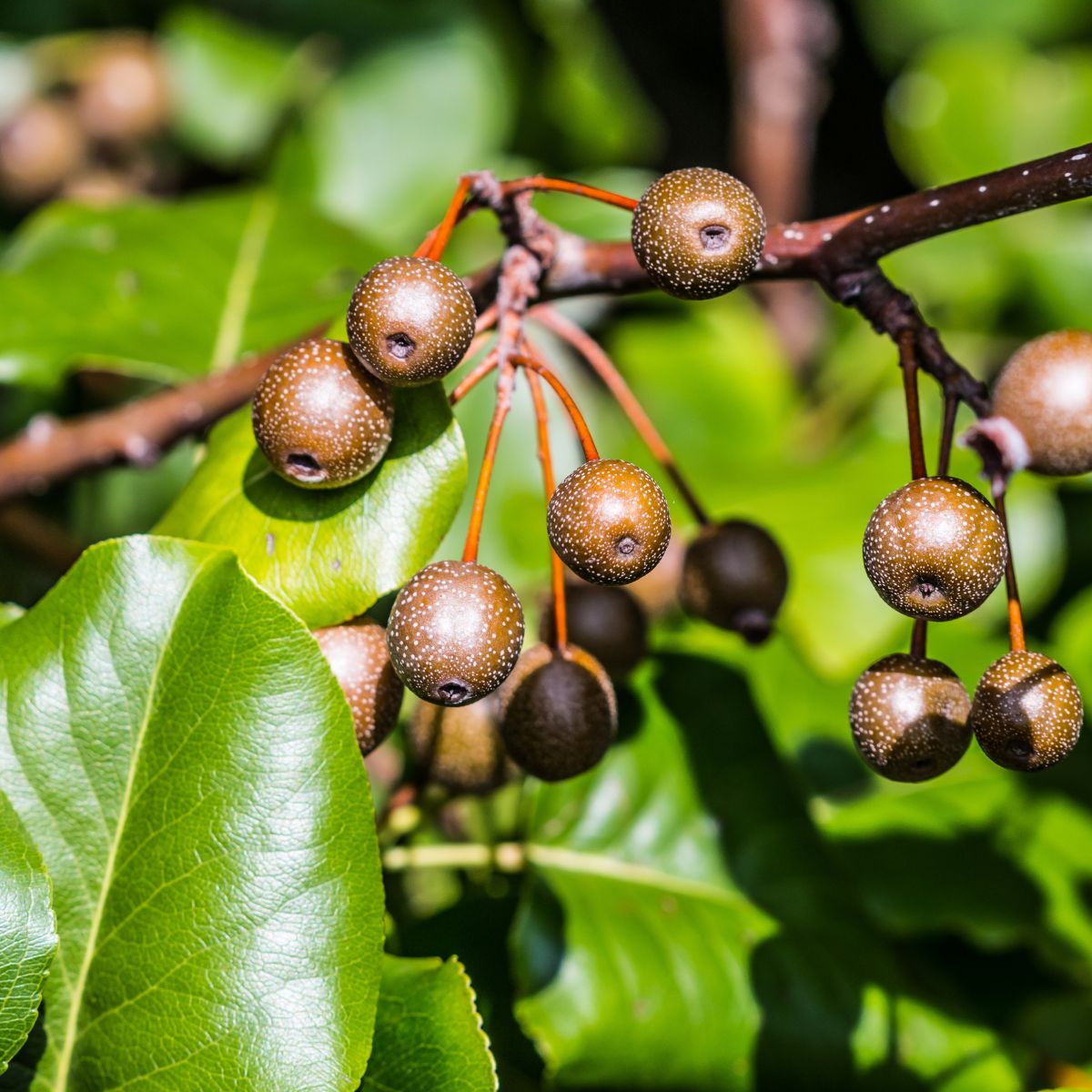
Callery pear trees have shiny, dark green, egg-shaped leaves with tapered tips and small, round-toothed margins. White, five-petaled flowers bloom in early spring, and the small, hard, brown fruits mature in fall alongside the reddish-purple foliage.
Good native alternatives include common serviceberry (Amelanchier arborea) and cockspur hawthorne (Crataegus crus-galli).
5. Japanese angelica tree (Aralia elata)

A deciduous shrub or small tree, Japanese angelica tree grows about 30 feet tall. Its prickly stems are covered in large, compound leaves. Each toothed leaflet features a main lateral vein that reaches the tip. Large, broad umbels of small, white flowers bloom in midsummer, and tiny, black fruits follow.
The Native devil’s walkingstick (A. spinosa) is difficult to distinguish from Japanese angelica tree, but it has a central flower stalk. Toothache tree (Zanthoxylum americanum) is also similar but blooms in spring.
6. Japanese barberry (Berberis thunbergii)
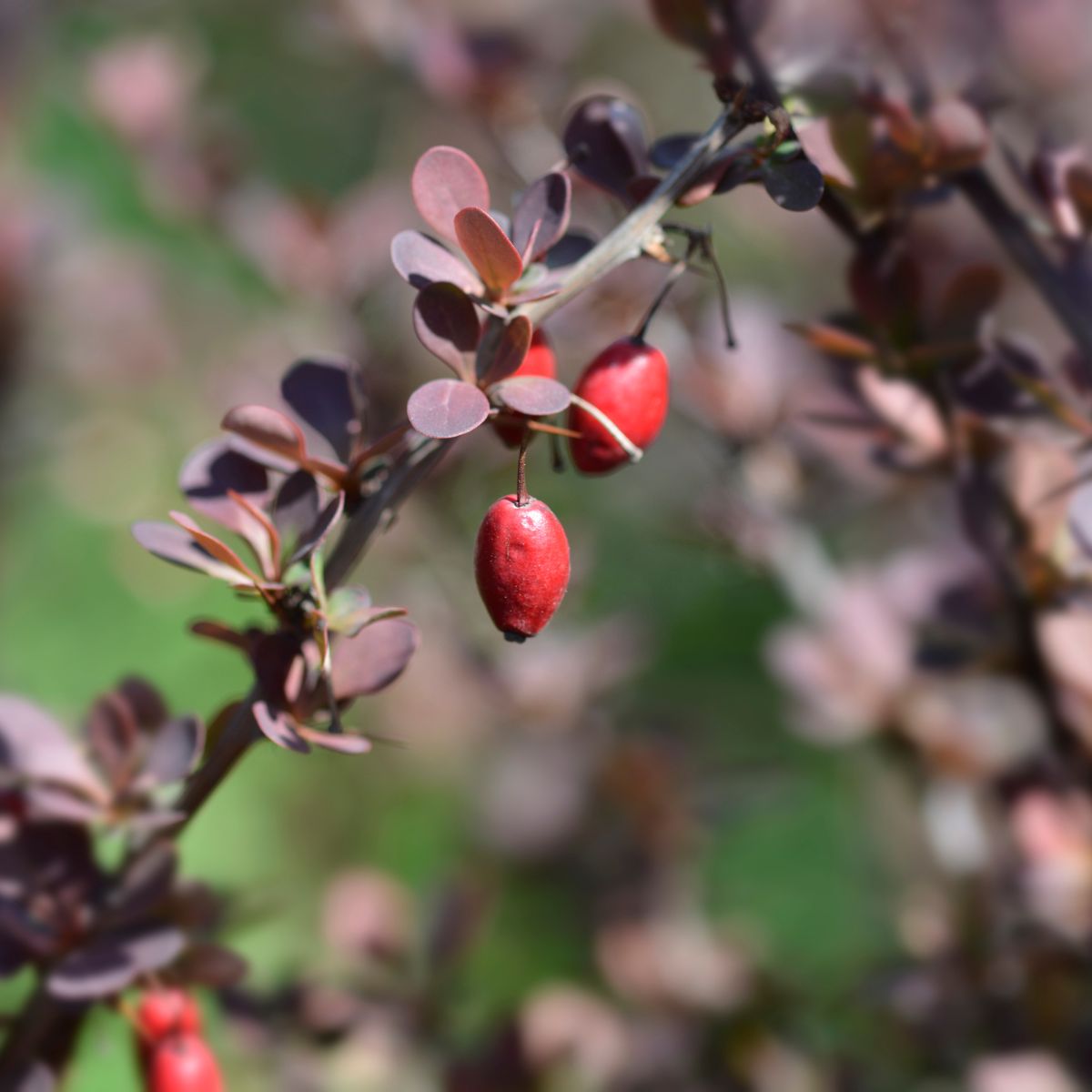
Not only does Japanese barberry displace native plants, but the leaf litter of this small deciduous shrub can also change the soil pH. The brown, deeply grooved branches have simple spines and small, spoon-shaped leaves that range from blue-green to a deep reddish-purple. Pale yellow spring flowers occur in clusters of two to four all along the stem, followed by bright red berries in summer that persist into winter.
Plant the very similar but native Allegheny barberry (B. canadensis) instead. Winterberry (Ilex verticillata) also makes a nice alternative.
7. Lesser celandine (Ficaria verna)
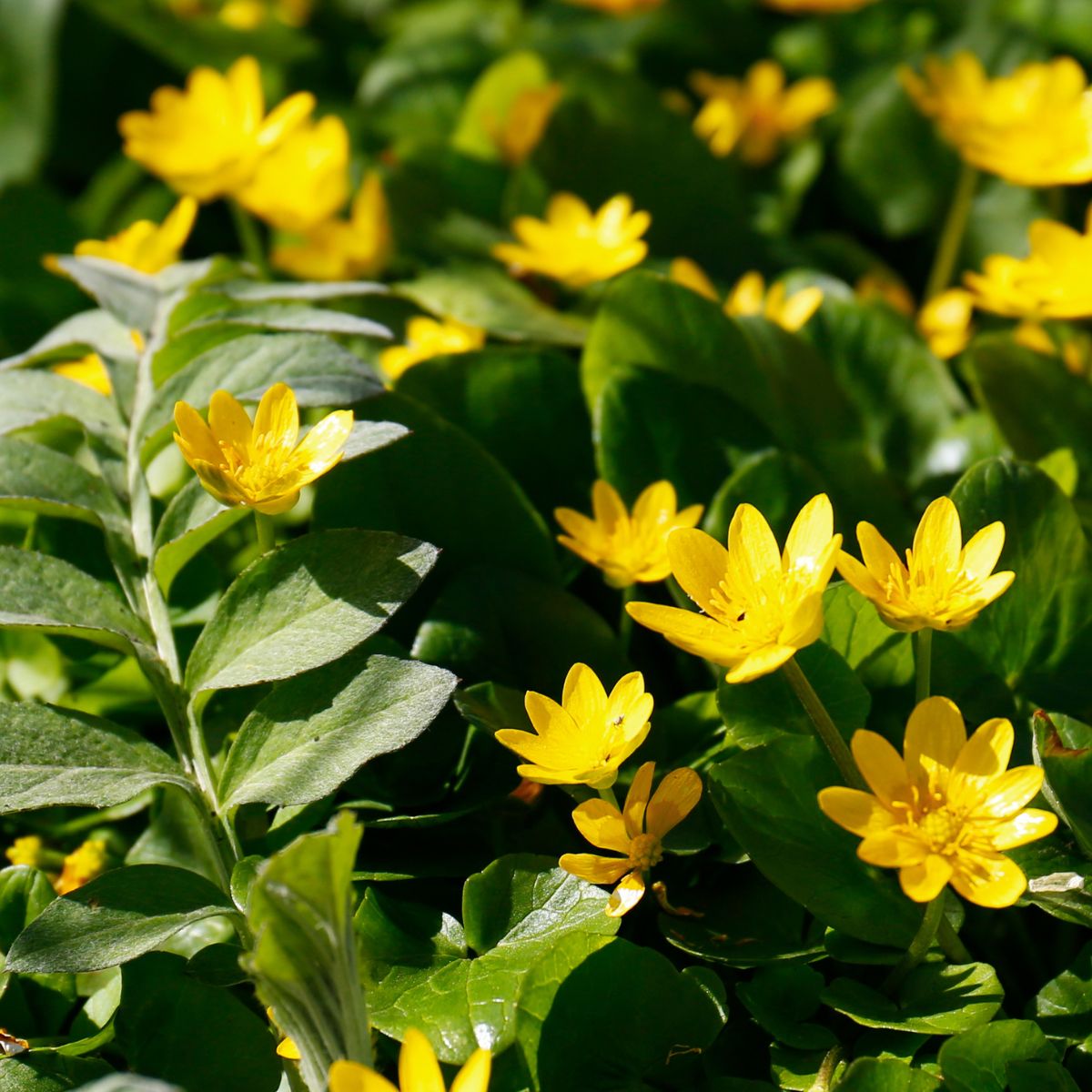
Lesser celandine, or fig buttercup, can form a dense carpet up to 12 inches high of shiny, dark green, kidney-shaped leaves. Yellow flowers bloom in early spring, and the entire plant then dies back by June. Bulblets and tuberous roots make eradication difficult.
Two lovely native alternatives include wood poppy (Stylophorum canadense) and marsh marigold (Caltha palustris).
8. Pale yellow iris (Iris pseudacorus)

A perennial aquatic plant, pale yellow iris grows along shores and in marshes and wet meadows. It grows two to three feet tall and has flat, swordlike leaves mostly at the base of the plant. Also called yellow flag, this iris produces two- to four-inch yellow flowers in late spring.
The native northern blue flag (I. versicolor) is similar in all but color. White turtlehead (Chelone glabra) blooms in late summer but also makes a nice alternative.
9. Privet (Ligustrum spp.)

There are four commonly listed privets in Maryland: border privet (L. obtusifolium), California (L. ovalifolium), Chinese (L. sinense), and European (L. vulgare). These deciduous to semi-evergreen shrubs have multiple stems with long, leafy branches. The small, simple, opposite leaves are oval to oblong, and the fragrant white flowers bloom in clusters from late spring to early summer. Small blue to black drupes follow.
Plant native viburnums instead, such as black haw (V. prunifolium) or southern arrowwood (V. dentatum).
10. Wintercreeper (Euonymus fortunei)
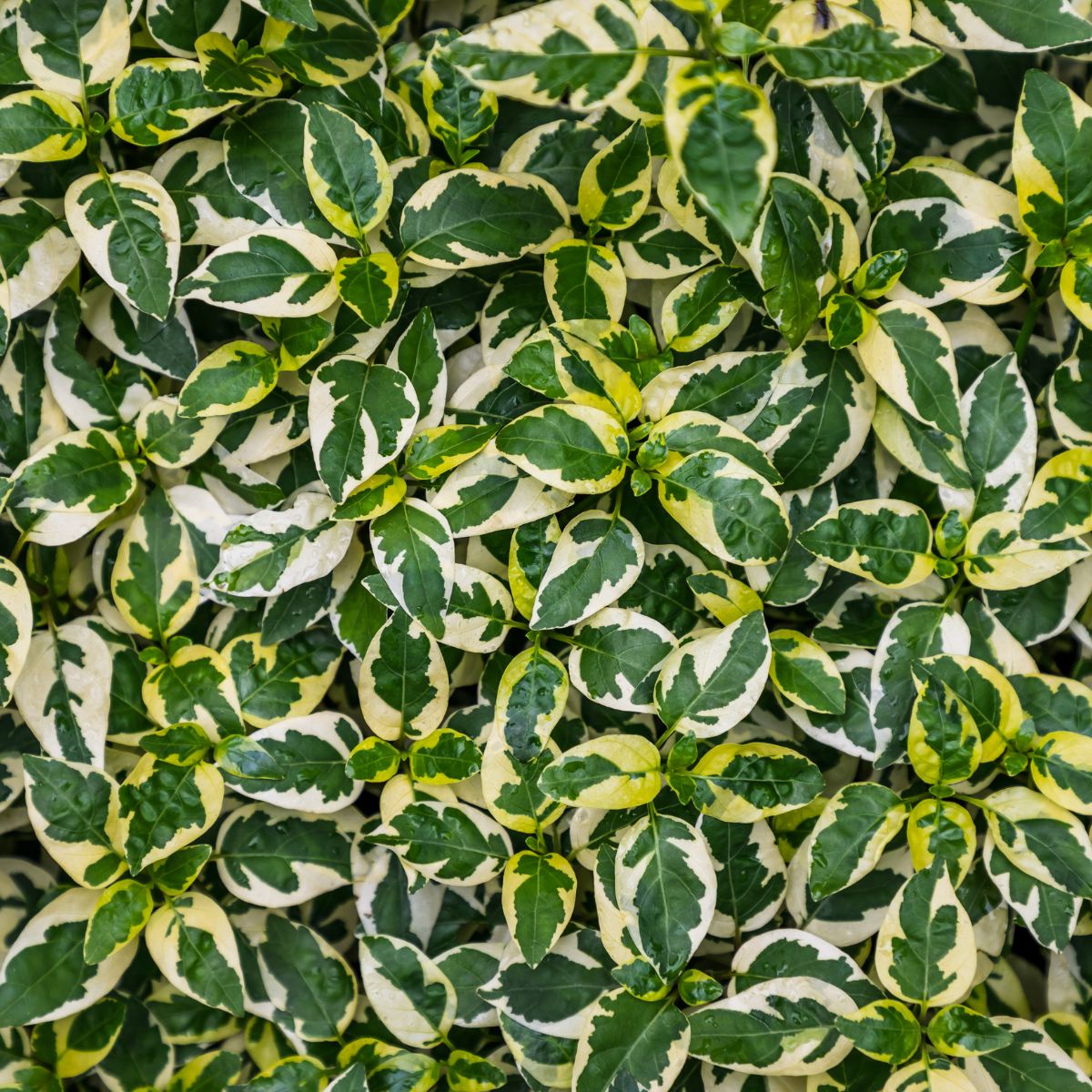
A cousin of burning bush, wintercreeper is an evergreen vine or sprawling shrub. The green stems become gray and corky as they mature, and the glossy, dark green, oval leaves have slightly toothed margins and pale veins. Small, greenish flowers are followed by pinkish seed capsules that split open when mature to reveal red-orange arils.
Replace with running strawberry-bush (E. obovatus) or a native vine, like crossvine (Bignonia capreolata).
The above are just a few invasive weeds in MD that can cause habitat loss. Here are a few others to keep in mind: purple loosestrife, yellow flag iris, garlic mustard, Japanese stiltgrass, incised fuemwort (corydalis incisa), water chestnut, and invasive vines such as Japanese wisteria, English ivy, and more.
So many beautiful native plants grow in Maryland, making it easy to replace any invasive plant species degrading the ecosystems in and around your property. Which lovely species will you choose to help nurture your little piece of earth?
